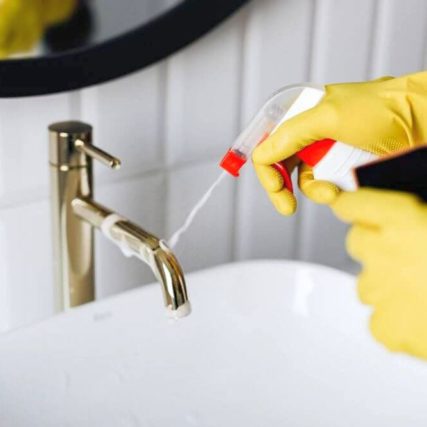
Emergency Eye Care in Hot Springs, Arkansas
A chemical eye burn occurs when the eye is exposed to a harmful liquid, solid, or gas chemical. The symptoms and long-term damage range from mild to severe, depending on the type of chemical and degree of exposure, most commonly from splashes to the face or rubbing the eyes with contaminated fingers or clothes.
There are three types of chemical burns that can affect the eye, each varying in severity but similar in treatment. They are: alkali, acid, and irritants.
If you are faced with a chemical burn of the eye, refer to the first-aid information below and call Dr. Long for immediate treatment.
Types of Chemical Burns
There are three types of chemical burns that can harm the eye, each categorized by pH scale.
- Alkali burns are caused by basic chemicals with a high pH (between 7-14). These burns are the most dangerous, as they often don't result in pain or irritation. Alkali substances can penetrate the cornea and severely damage both the internal and external structures of the eye, such as the cornea and lens.
Alkali chemicals include ammonia, lye, lime, and potassium hydroxide, all of which are commonly found in household cleaning products, fertilizers, or plaster. - Acid burns, caused by substances with a low pH (below 7), are less damaging to the eyes than alkali chemicals. Although acid burns can harm the cornea (outer surface of the eye) or even cause blindness, acids typically don’t affect the eye’s internal structure. Common examples of acids that can cause eye burns include sulfuric acid, hydrochloric acid, acetic acid, nitric acid, and hydrofluoric acid. The most common household acidic items that can harm the eyes include vinegar and nail polish remover.
- Irritants are less damaging to the eyes than alkali or acid burns due to their neutral pH (around 7). Irritants, such as household detergents, tend to generate more discomfort than actual harm.


Chemical Eye Burn Symptoms
Though the symptoms and severity of a chemical eye burn depend on the substance, one will likely experience any of the following:
- Burning
- Pain
- Swollen eyelids
- Blurred vision
- Redness
- Stinging
- Tearing
- Inability to keep eye open
At-home care for chemical eye burns can significantly reduce the long-term ocular damage and preserve vision.
First Aid Suggestions
The first and most important step in caring for chemical exposure to the eye is to thoroughly flush the affected eye with clean water for at least 10 minutes. If you wear contact lenses, remove them as soon as possible.
Keep the eye wide open throughout the process to allow the water to completely irrigate the eye. Ideally, one should flush the eye with a specific saline irrigating solution, though clean tap water will do.
Hold your face under a continuous stream of water, whether over a sink or in the shower (even fully clothed), allowing the eye to flush.
Once done, seek immediate medical attention and call us for further treatment.


We Treat Chemical Eye Burns and Other Emergencies
We will evaluate and offer the correct treatment to prevent long-term damage and preserve ocular health.
Our experienced staff is here to offer personalized attention and care to each patient – something that most urgent care facilities can’t provide. Furthermore, aside from treating the injury, we also provide prescriptions for various medications to help manage pain and promote recovery.
Remember: early treatment leads to a better outcome. So for any eye emergency you may have, don't delay in calling Medical Arts Optical in Hot Springs.
